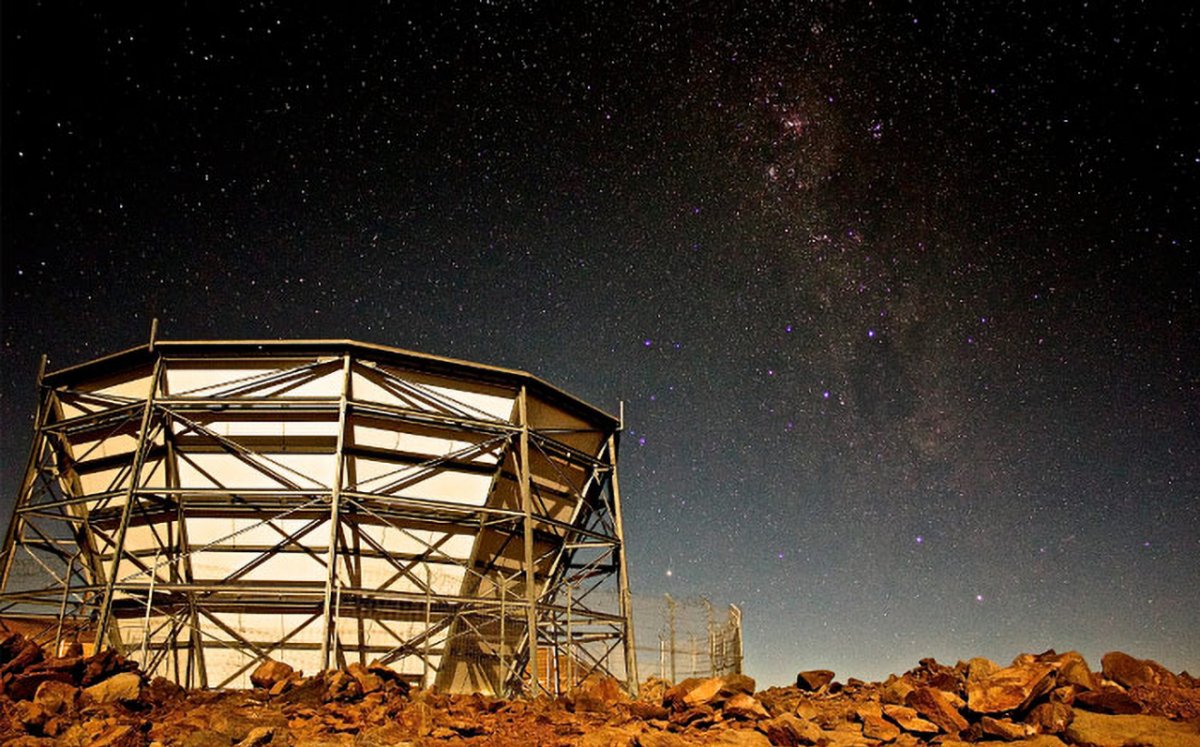Expansion of the universe: New measurement confirms discrepancy in Hubble's constant
Source: Heise.de added 08th Jan 2021In the debate about the Hubble constant and the age of the universe, there is another point for the ESA Planck Space Telescope and its 2013 presented measurements. With the Atacama Cosmology Telescope (ACT) in Chile, researchers independently analyzed the cosmic background radiation and determined that the universe 13, 77 is billion years old – with an inaccuracy of 40 Millions of years.
That and the Hubble constant of 67, 6 kilometers per second per megaparsec fit very well with the Planck values and not with those other measurements that had recently determined a significantly higher propagation speed.
How old is the universe? The Hubble constant indicates the rate at which the universe is currently expanding. It means that an object is at a distance of one megaparsec (3, 26 million light years) solely because of the expansion of the universe away from us at this rate. For comparison: The Andromeda Galaxy is about 0, 89 Megaparsec away from us. The Hubble constant was calculated for the first time by the US astronomer Edwin Hubble. The constant is now one of the fundamental quantities for understanding our universe, but its exact value is now more unclear than long assumed. Instead of providing an approximation, new measurements only deepen the differences.
2019 had a group of researchers presented the results of their measurements with the Hubble space telescope. You were on a Hubble constant of 74, 03 kilometers per second per megaparsec. That was a full 9 percent more than the Planck space telescope had determined. At the same time, the researchers pointed out that their distance measurements had achieved a previously unattained accuracy. A year later, the scientists of the Megamaser Cosmology Project had followed up and presented their measurements, according to which the Hubble constant at 73, 9 kilometers per second per megaparsec. Both teams measured the distances to astronomical objects in order to calculate their escape speed.
The study by the researchers at the Atacama Cosmology Telescope, now published in the Journal of Cosmology and Astroparticle Physics, is instead based on the analysis of the cosmic background radiation. This is, as it were, the afterglow of the Big Bang, it is the remnant of that light that is round 380. 000 years after the creation of the universe. Before the cosmos could not be penetrated by light. The team then calculated how long this light had been on its way to us and was able to determine not only its age, but that of the universe. The measurements now carried out are more precise than those by Planck, but the results agree well with those of the ESA telescope. The discrepancy between the two values is thus deepened.
Shortly before a great discovery? Research director Steve Choi from Cornell University stated when the data was pre-published that he had previously had no preference for a certain value of the Hubble constant. But that you can get the most recent Planck value (66, 40 kilometers per second per megaparsec), strengthens confidence in the measurements of the oldest light in our universe. According to his colleague Michael Niemack, the growing conflict between the two values suggests that a new discovery is imminent that will change our understanding of the universe. There have been various theories in this regard for a long time, e.g. on dark matter, but there is still no explanation for the considerable discrepancy between the values.
(mho)
brands: Afterglow Galaxy Million New other Space Team Value media: Heise.de keywords: ESA Galaxy
Related posts
Notice: Undefined variable: all_related in /var/www/vhosts/rondea.com/httpdocs/wp-content/themes/rondea-2-0/single-article.php on line 88
Notice: Undefined variable: all_related in /var/www/vhosts/rondea.com/httpdocs/wp-content/themes/rondea-2-0/single-article.php on line 88
Related Products
Notice: Undefined variable: all_related in /var/www/vhosts/rondea.com/httpdocs/wp-content/themes/rondea-2-0/single-article.php on line 91
Warning: Invalid argument supplied for foreach() in /var/www/vhosts/rondea.com/httpdocs/wp-content/themes/rondea-2-0/single-article.php on line 91
